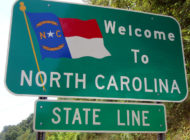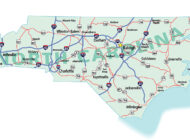Business growth should always be a good thing. But growth is not without its headaches – especially in the world of eCommerce, where many companies struggle to keep up with consumer expectations for rapid fulfillment.
This ‘struggle to keep up’ can often be alleviated by adding an additional eCommerce fulfillment center that is closer to large segments of your customer base. In this article, we’ll examine what that might look like and offer up our stomping grounds – Eastern North Carolina – as an ideal eCommerce location to consider.
When is it time to add an additional eCommerce fulfillment center?
 As your business grows, so will your customer base. This base will likely spread farther and farther geographically, and you may find that it’s becoming very costly to fulfill orders to these customers. This cost can come in the form of parcel rates which can become quite substantial when you ship across multiple ‘zones’ in the U.S. The cost can also come, however, in the form of customer dissatisfaction if your products are taking longer to reach your customers than they would like.
As your business grows, so will your customer base. This base will likely spread farther and farther geographically, and you may find that it’s becoming very costly to fulfill orders to these customers. This cost can come in the form of parcel rates which can become quite substantial when you ship across multiple ‘zones’ in the U.S. The cost can also come, however, in the form of customer dissatisfaction if your products are taking longer to reach your customers than they would like.
It may make sense then to implement a new eCommerce fulfillment center closer to your most ‘far away’ customers. For instance, if you currently distribute only from the West Coast or Central U.S., it may make sense to add an East Coast distribution center if you have a sizeable customer base in the East.
“How will paying for a new distribution center help with my costs?” you ask. For starters, most companies will enjoy a savings in substantial parcel costs – your most significant fulfillment expense – by adding a second distribution center.
Secondly, there are many ways to add a second distribution center. At the more expensive end, you could do it all yourself – building or purchasing a warehouse and paying for the staffing and equipment it requires. Less expensive options include either building or leasing a warehouse yourself and having a third-party logistics (3PL) provider operate it. The least expensive – and most common – option involves partnering with a 3PL for public warehousing and eCommerce fulfillment.
Partnering with a 3PL for public warehousing and fulfillment
If you are not currently partnering with a 3PL but are considering one for an expanded distribution network, the typical model works like this:
The 3PL will assess your current space and service needs to determine warehouse costs and systems and service requirements. With public warehousing, you pay for only the space you need – effectively ‘splitting the bill’ for the warehouse with your other public warehousing tenants.
Importantly, this space is scalable – allowing you to add or subtract inventory volume as sales dictate, while having your costs go up or down to match the volume. This is ideal for companies that want to build up inventory slowly in the new location – perhaps starting only with a segment of the fastest-moving inventory and then building up from there as sales warrant.
Once warehousing costs are determined, you will then pay for pick and pack (i.e., fulfillment) services at a rate you and your 3PL will determine in your contract. Once the contracted terms are agreed upon, your 3PL will integrate its warehouse management system (WMS) with your commerce platform (e.g., Shopify) in order to receive orders. From there, you’re off to the races.
If you’re already working with a 3PL for your original distribution center, then the process of adding a second public warehousing DC to your supply chain will work as outlined above – without any disruption or interference to your original operation.
Consider Eastern North Carolina for your eCommerce fulfillment center
If the idea of public warehousing combined with eCommerce fulfillment seems like a good idea for your next DC, and you’re looking for space on the East Coast, then look no further than North Carolina: Forbes Magazine’s #1 “Best State for Business.” And, while you’re looking at North Carolina, pay close attention to the eastern part of the state. Here are few reasons why:
Prime East Coast location: Eastern North Carolina is located on the Mid-Atlantic coast, exactly halfway between Boston and Miami and within one-day reach of 70% of the U.S. population. It is also relatively close to the Ports of Norfolk and Wilmington, while being accessible from major interstates such as I-95, I-40 and I-85.
Low Costs: North Carolina’s big supply chain reach is not matched by big logistics costs. The Tarheel state has lower warehousing and labor costs than many other East Coast states. Furthermore, the eastern part of the state (e.g., Rocky Mount) – being more rural – has lower space costs than Raleigh and other metropolitan areas within the state.
Continued Investments in Logistics Infrastructure: North Carolina continues to attract manufacturing and logistics companies to the state through its continued investments in the state’s logistics infrastructure. These investments include those related to the state’s ports, highways, and intermodal capabilities. Speaking of which, Eastern North Carolina is the home of CSX’s new Carolina Connector terminal, which will begin operations in 2020 and handle up to 110,000 containers a year.
Eastern North Carolina is also the home of Kanban Logistics. With over 1,000,000 square feet of warehousing space across 7 facilities, we have the space and the capabilities to boost your supply chain with an East Coast eCommerce operation – without breaking the bank. To learn more about our services, contact Kanban today.



